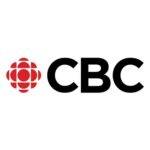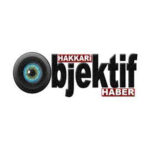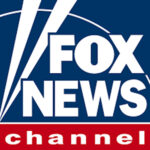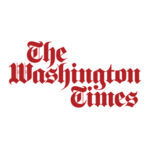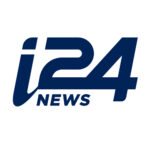|
Getting your Trinity Audio player ready...
|
Intelligence Report: The Concept of Greater Jordan and the Creation of a Safe-Zone in South Syria
Information:
Reportedly in June 2017 the United States, Russia and Jordan signed a memorandum establishing a “Safe-Zone” in southern Syria – a 30-kilometer-wide strip in Syria running parallel to the Jordanian border.
The exact geographic dimensions of the Safe Zone are as of now unclear; however, it does include the Syrian districts of Quneitra, Dar’aa and As-Suwayda, all of which border Jordan.
According to the agreement, Syrian rebel groups as well as Syrian regime forces will maintain a presence in the zone, however, Iranian forces as well as Iranian backed Lebanese Hezbollah and Iraqi Shi’ite militias are forbidden from the zone.
Analysis:
The war in Syria impacts Jordan in different ways.
One aspect is the Syrian refugees. According to the UN Refugee Agency (UNHCR) the war in Syria has produced 5.5 million refugees. In Jordan, over 660,000 displaced Syrian men, women and children are currently registered refugees in Jordan. Jordanian officials claim the number of Syrian refugees in Jordan is much larger – exceeding 1.3 million people. While more than 140,000 have found sanctuary in the Za’atari and Azraq Refugee Camps, approximately eighty-percent live outside of camps. Many arrived with limited means to cover even basic needs, and those who could initially rely on savings or support from host families, are now increasingly in need of help. Ninety-three percent of refugees in Jordan live below the poverty line. This is a heavy burden for Jordan. Edward Kallon, the United Nations Resident and Humanitarian Coordinator in Jordan and United Nations Development Program (UNDP) Resident Representative at the UNDP Jordan Country Office, estimated in July 2016 the hosting costs at 2.5 billion USD which equals five percent of Jordan’s GDP. Jordanian officials in June 2017 claim the cost is 6.6 billion USD since the war broke out in 2011.
Another aspect is the growing threat to Jordan’s security due the presence of two factors in Syria which are hostile to Jordan: Hundreds of ISIS affiliated militants scattered in south-west Syria, close to the triangle Jordanian-Syrian-Israeli border and Iranian Shi’ite backed militias (the Lebanese Hezbollah, and Iraqi, Afghan and Pakistani Shi’ite militias).
In December 2016 Jordan’s Chief of Staff, Lieutenant General Mahmoud Freihat, expressed concern with the presence of ISIS in Jordan. At that time, he estimated that some 300 Jordanian militants joined had joined ISIS in Syria. He also expressed concern regarding the possibility of “Al-Hashd Al-Sha’abi” – The Popular Mobilization Units (PMU) – an Iraqi military force consisting primarily of Iraqi Shi’ite Militias, some of them financed, trained, guided, and massively armed by Iran – moving into to Syria by saying “It is a very possible development which disturbs Jordan.” (for more information on Al-Hashd Al-Sha’abi read my article “A Growing Whirlpool of Violence: The Middle Eastern Legacy of Barack Obama”).
Jordan’s security concerns have resulted in the appearance of a new concept in Jordan’s regional and national security policy known as “Greater Jordan.” In essence, the guiding rationale of the “Greater Jordan” concept is to create a buffer zone inside southern Syria which will secure Jordan from the north and from the east. The zone begins in the most northern tip of Jordan where the borders of Jordan, Syria, and Israel meet and stretches eastward along the Jordanian-Syrian border all the way to where the borders of Jordan, Syria, and Iraq meet.
In this buffer zone, Jordan is creating and arming a non-Jordanian military proxy comprised of Bedouin tribes in southern Syria as well as in Bedouin tribes western Iraq. (For more on the concept of Greater Jordan please read my February 2016 article The Coalition of the Willing) and my book Inside the Middle East: Making Sense of the Most Dangerous and Complicated Region on Earth March 2016).
To the best of my knowledge, the first Jordanian official announcement acknowledging the existence of such a force was made in December 2016 when Jordan’s Chief of Staff announced that Jordan had established an armed proxy named The Army of Tribes – Jeish al-‘Asha’aer – to fight terror threats especially in southern Syria. At the time, he did not provide information regarding the exact identity of the members of the Army of Tribes, nor did he provide details regarding its size. According one report, the force consists what was described as “two Battalions” but specific numbers are not available.
In April 2017, the King of Jordan Abdullah II declared that “Jordan is indirectly operating deeply within Syrian territory to secure Jordan’s strategic interest.”
What is the current military picture in southern Syria?
The Jordanian-Syrian border is about 250 miles long with two border passages located two miles apart from one another.
The Jordan border runs parallel to five Syrian districts: Beginning in the west is the Syrian District of Quneitra and moving eastward it runs along the Syrian districts of Dar’aa, As-Suwayda, Damascus, Homs and ends in the most northeastern point of Jordan where Jordan, Syria and Iraq meet.
As of today, these are the most significant military developments along that strip:
From the western outskirts of the city of Dar’aa (located some four miles north of the Jordanian border) all the way westward towards the Israel-Jordanian-Syrian border in a primarily rural area about 25 miles wide – the Free Syrian Army (FSA), a major Syrian rebel group formed in the spring of 2011 by Syrians who defected from the Assad regime’s armed forces, operating (in this region) under the name “Al-Jabha al-Janoubiya” (The Southern Front) “Al Jabha Al-Islamiyah” (the Islamic Syrian Front – an umbrella name for many Syrian Islamist affiliated rebel groups) are engaged in skirmishes against an ISIS affiliated factor known as the Army of Khalid Bin Al-Walid.
The city of Dar’aa (also located on the highway which connects the Jordanian-Syrian border to Damascus) itself is the stage of fierce battles. Syrian rebel groups affiliated with Al-Jabha al-Janoubiya as well as rebel factors affiliated with Al Jabha Al-Islamiyah pushed back the Assad and Iranian backed militias in Dar’aa and took over some areas in the city and its outskirts. In response to the rebel offensive, Russian and Syrian jets conducted air raids on Dar’aa and employed heavy artillery and missiles to try to preserve their hold on the city. As of now, the Assad regime and its allies have failed to regain control of the area.
Further to the east, the Syrian-Iraqi Border Crossing of Al-Tanaf, located on the Baghdad-Damascus highway, a few miles from the Jordanian-Syrian-Iraqi border, has recently become a stage for a dramatic development. Towards the end of 2016, on the Syrian side of the border close to the Al-Tanaf Crossing, the United States established a training camp for Syrian rebel groups associated with the Free Syrian Army. Over the past few months, the massive military campaign of the US-led coalition, together with Syrian Kurdish military units, and the Free Syrian Army, has resulted in ISIS losing its grip on one of its major strongholds in Syria – the city of Ar-Raqqa located next to the Euphrates River. As ISIS loses more and more areas in Syria and in Iraq, the Iran-Assad axis is trying to fill in the vacuum and gain control the Al-Tanaf Passage on both the Syrian and Iraqi sides of the border. If Iran controls the Border Crossing, as well as the surrounding areas, it will enable Iran to easily and freely stream weapons, ammunition, and Iranian- supported Iraqi Shi’ite militias into Syria.
The United States identified that development and moved to prevent it. In May 2017, the US declared that the triangle border area of Jordan-Syria-Iraq is a “Demilitarized Zone”. The Iranian backed Al-Hashd Al-Sha’abi, as well as Assad’s forces ignored the US announcement, and attempted to establish military control in that area, resulting in a number of US attacks on Al-Hashd Al-Sha’abi and Assad’s forces in May and June 2017.
The United States’ message got through – for now. In mid-June 2017, the Iraqi government announced that the Al-Tanaf Passage on the Iraqi side of the border would be secured by two brigades of the Iraqi Border Guards.
However, Iran intends to deepen its grasp in both Iraq and in Syria. Taking over the Al-Tanaf Border Crossing, located on the highway connecting Baghdad and Damascus, is of utmost strategic importance for Iran, as it is a key location for the Iranian corridor they are building from Iran, through Iraq, Syria, and Lebanon (which is already for all intents and purposes under powerful Iranian influence via Iran’s proxy in Lebanon – Hezbollah) to the Mediterranean Sea which, in their words is “vital for Iran’s strategic interest and national security” and a critical step towards attaining the Iran’s goal of becoming the leading regional super power.
The US is currently thwarting Iran’s advances in the area surrounding the Passage, while Syrian rebel forces – backed by a US aerial umbrella – are making their way across the Syrian desert towards the border crossings with Iraq including the Al-Tanaf crossing, to fill in the power vacuum following ISIS’ shrinking presence in the Syrian desert.
Recent US moves in Southern Syria and the area of Al-Tanaf are very significant. Why?
Jordan borders Syria and Iraq, two arenas partially occupied by Iran and its Shi’ite backed militias, as well as Sunni Salafi Jihadi militant groups such as ISIS – factors, hostile to Jordan and who, as stated above, pose a growing threat to Jordan’s security.
In addition to Jordan, these factors also present threats to the Arab Gulf Monarchies, Israel, and Egypt.
Jordan, therefore, because of its geographical location, has become the northern gatekeeper of the Arab Monarchies in the Arabian Peninsula and the eastern gatekeeper for Israel and Egypt.
Ensuring Jordan’s security is paramount to the strategic interest of the Arab Gulf states, Israel, and Egypt.
Iran’s proactive and violent expansion policy throughout the Middle East and the back-wind it gained during the presidency of the 44th President of the United States, Barack Obama has been widely covered in many articles I have published, including Pax Amer–Iran (March 2015), Vienna, Aiden, Damascus (July 2015), Restoring US Influence n the Middle East (May 2016), A Growing Whirlpool of Violence: The Middle East Legacy of Barack Obama (January 2017), etc.
In 2004 King Abdullah II of Jordan warned that Iran was trying to create a “Shi’ite Crescent.” His prediction was accurate; as of 2017 Iran is making a progress realizing that vision. Jordanian actions, designed to protect the Kingdom and to act as the gatekeeper, illustrate the Monarchy is well aware of Iran’s expansion plan.
The direct, proactive involvement of the Trump administration in Syria in general, and in southern Syria in particular, as manifested both in the United States’ determination to prevent the creation of an Iranian controlled corridor from Iraq to Syria, as well as the June 2017 memorandum signed between the US, Russia and Jordan establishing a “Safe-Zone” in southern Syria, clearly indicates that the Trump administration views Jordan’s stability of utmost strategic importance – and rightly so.
Prediction:
The Safe-Zone agreed upon between US-Russia and Jordan in June 2017 is a major component of the concept of Greater Jordan.
The Safe-Zone will become a permanent component of Jordan’s regional policy and national security policy.
With the lack of political arrangements in Syria that will meet Jordan’s national security needs for stability in southern Syria, I predict that Jordan will continue to nurture proxies in southern Syria, mostly the Jeish al-‘Asha’aer, as well as the Free Syria Army (FSA) rebel forces. To that end, Jordan will enjoy the financial, military, and intelligence backing of the US as well as Israel and Arab Gulf Monarchies.
Though deeply frustrated with the decisive moves of the US in Al-Tanaf, as well as with the creation of a Safe-Zone in south Syria, Iran will have to accept the ground rules set by the United States.
The Trump administration views Iran as a major source of threat and instability and will not hesitate to use military force to cause Iran’s aggressive and dangerous expansion plan serious damage. The Mullah regime is an extreme and dangerous one – yet it is not suicidal; it will not risk a direct military collision with the US.
Thus, in my evaluation, a direct US-Iranian military collision in Syria is not likely to take place in the foreseeable future.
Rather, Iran will continue doing what it excels in: sacrificing proxies such as the Lebanese Hezbollah, Iraqi Sh’iite militias, Afghan and Pakistani Shi’ite militias on the altar of its ideology and in the pursuit of its Geo-strategic goals.
Thus, due the fact that US forces and US backed Syrian rebel groups are rubbing shoulders with Iranian proxies in the Syrian desert at the meeting point of the Syria-Iraq-Jordan borders, the odds are increasing for further US-Iranian proxy confrontations.
In my book, Inside the Middle East: Making Sense of the Most Dangerous and Complicated Region on Earth (March 2016) I had outlined that failing to end the war in Syria would result in the creation of a Jordanian protectorate zone in south Syria, backed by Israel and the Arab Gulf Monarchies (pp.159-160). I also assessed that Iran would have decreased maneuvering capacities in Syria (pp 154-159).
The creation of the Safe-Zone in southern Syria, as well as the curtailment of the Iranian expansion in the south Syria, seems to validate these assessments and predictions.
End of Intelligence Report
Click Here for PDF of this Report
If you want to have a better understanding of the news and what really drives the unfolding events…
Read the latest book of Avi Melamed,
INSIDE THE MIDDLE EAST | ENTERING A NEW ERA, available now >>>
Follow me on Twitter @AviMelamed; Facebook @InsideTheMiddleEast; for more Videos on YouTube https://www.youtube.com/c/AviMelamed
I can always be reached at Av*@Av********.com
































